 https://media.airfactsjournal.com/wp-content/uploads/2016/07/06170217/tesla-autopilot-2.jpg
534
950
Jeff Miller
https://media.airfactsjournal.com/wp-content/uploads/2024/09/03140241/AF_Logo_24.png
Jeff Miller2016-07-07 14:01:392016-07-07 14:00:00Are car autopilots the equivalent of airplane autopilots?
https://media.airfactsjournal.com/wp-content/uploads/2016/07/06170217/tesla-autopilot-2.jpg
534
950
Jeff Miller
https://media.airfactsjournal.com/wp-content/uploads/2024/09/03140241/AF_Logo_24.png
Jeff Miller2016-07-07 14:01:392016-07-07 14:00:00Are car autopilots the equivalent of airplane autopilots?NEW ARTICLES
OUR MOST RECENT POSTS
Air Facts was first published in 1938 by Leighton Collins, dedicated to “the development of private air transportation.” It’s a different world now, and it’s a different Air Facts. Relaunched in 2011 as an online journal, Air Facts still champions, educates, informs and entertains pilots worldwide with real-world flying experiences. More…
 https://media.airfactsjournal.com/wp-content/uploads/2016/07/06170217/tesla-autopilot-2.jpg
534
950
Jeff Miller
https://media.airfactsjournal.com/wp-content/uploads/2024/09/03140241/AF_Logo_24.png
Jeff Miller2016-07-07 14:01:392016-07-07 14:00:00Are car autopilots the equivalent of airplane autopilots?
https://media.airfactsjournal.com/wp-content/uploads/2016/07/06170217/tesla-autopilot-2.jpg
534
950
Jeff Miller
https://media.airfactsjournal.com/wp-content/uploads/2024/09/03140241/AF_Logo_24.png
Jeff Miller2016-07-07 14:01:392016-07-07 14:00:00Are car autopilots the equivalent of airplane autopilots?
I survived an airplane crash – here’s what I learned
I was thereI attempted a turn away from the ridge, probably induced an accelerated stall at some point, and we hit the trees. We spent about 43 hours in the woods on the side of Johnson Mountain. My friend passed away sometime during that period. I had no survival gear whatsoever. I had no flight plan. No one knew where I was. I did have an ELT, and it saved my life.

Catch a falling star
I was thereEven though it was only three o’clock in the late autumn afternoon, the last gray light of day would fade fast before too long, as the sun was blocked by multiple cloud layers. I heard Martin Olson’s voice coming through my headphones calling Nome Radio on 122.2. However, there was something… I don’t know. I couldn’t put my finger on it, but something didn’t sound quite right.

Friday Photo: Hudson River SFRA
Friday PhotoIt's still one of the best flights a pilot can make: flying up the Hudson River past New York City at low altitude. Pilot John Phillips did it recently with some flying club friends in a Cessna 172, and he shares a spectacular picture of the Freedom Tower in Manhattan. It's this week's Friday Photo.

A long cross country (and a thunderstorm) teach some valuable lessons
I was thereNew pilots: do you want to know how to learn a lot about flying in a short period of time? Plan a long cross country flight… I mean, a really long one. When I decided to fly my “new” ‘63 Cherokee 180 most of the way across the U.S. to my summer vacation destination, at first I didn’t realize how valuable the lessons learned along the way would be.

10 ways to get a good weather briefing in a world of information overload
Weather GeekTechnology has taken a lot of the mystery out of weather forecasting, filling in the gaps with more precise, more accurate and more comprehensive information. Given this embarrassment of riches, it's tempting to simply consume weather reports without thinking about them: "the TAF says it'll be good, so we're going!" That's a dangerous mindset.
John’s Blog
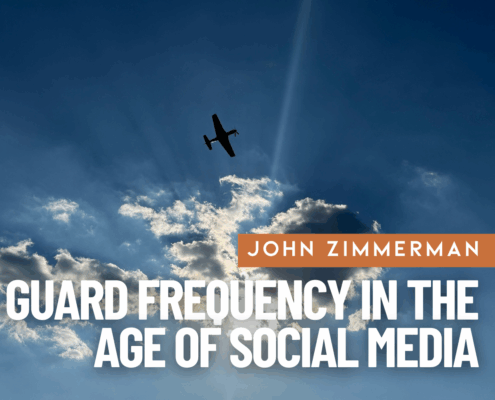
Guard frequency in the age of social media
John's blogYes, this is an “old man yells at cloud” article. Yes, I can already hear the jokes about the “guard police.” I don’t care. It needs to be said: Guard frequency (121.5) has become a national embarrassment, a sign that our self-absorbed social media culture has spread to the once-boring world of aviation. We need to do better.
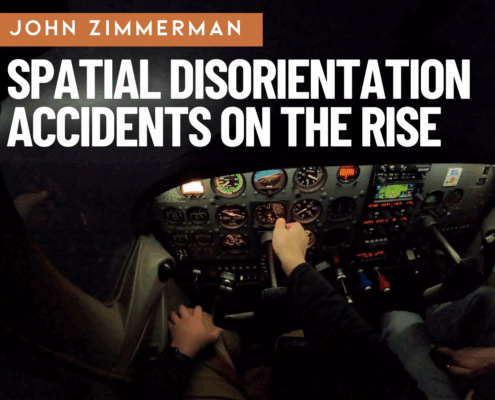
Why are spatial disorientation accidents on the rise?
John's blogResearchers from the FAA show that SD accidents have not declined since 2003—in fact, quite the opposite. You might assume the widespread adoption of tools like datalink weather, modern autopilots, reliable AHRS, and electronic flight bag apps would make VFR-into-IMC (the classic SD accident scenario) much less common. It’s a great theory, but the numbers don’t support it.

The aviation community is alive and well
John's blogBefore the expletive could even leave my mouth, one of the FBO employees offered to lend me the crew car. I assumed the crew car option would be impossible, or at least impossibly bad manners, since the round trip would be nearly two hours and the FBO was closing soon. But he wouldn’t hear it: “take all the time you need and just drop the keys off with the night security guard. We appreciate your business.”
I Can’t Believe I Did That
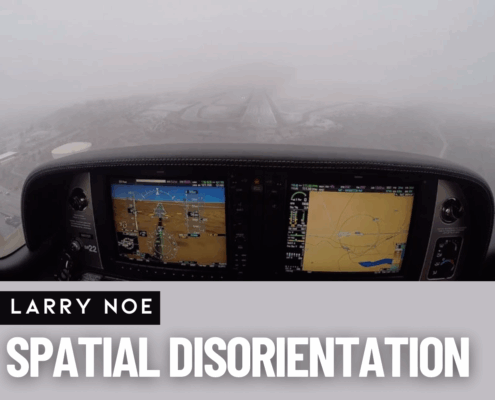
Spatial Disorientation: I Thought It Couldn’t Happen to Me
I Can't Believe I Did ThatI began climbing to get between layers, intending to stabilize and then request IFR. But as I entered the clouds, what I thought could never happen did. I was in an unusual attitude: 45 degrees banked and nose down. For a moment, I considered pulling the CAPS parachute. I had often wondered if I’d have the presence of mind to use it in a real emergency. After this, I know the answer is yes. But I also realized I could recover.
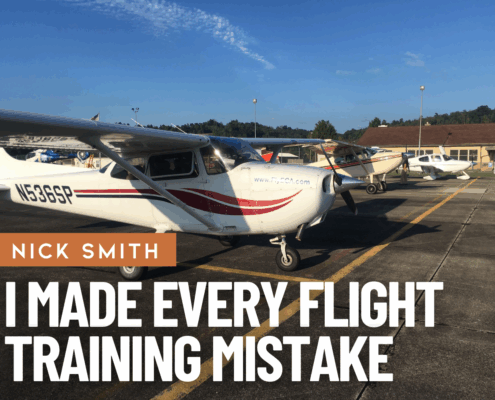
I Made Every Flight Training Mistake Humanly Possible
I Can't Believe I Did ThatFlight training is rarely a straight line, but for Nick Smith it turned into a winding, four–year journey full of delays, false starts, and unexpected costs. In this brutally honest account, he shares the mistakes he made—so future pilots don’t have to repeat them. His story is both a cautionary tale and a reminder that perseverance can still lead to the certificate.

A Quarter Tank and a Prayer
I Can't Believe I Did ThatI was watching the fuel gauges drop before my eyes. I elected to continue to ECG rather than turn back. I was on a direct course. The Norfolk controller wished me luck—not the most reassuring sign—and handed me off to ECG Tower, who had already been briefed.
Opinion
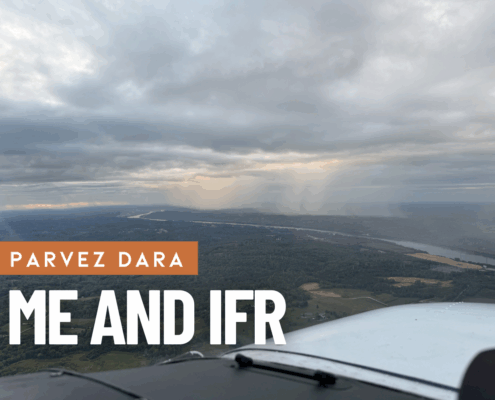
Me and IFR
OpinionDuring another smooth cloudy day, a relative—who shall remain unnamed—asked if I wanted to fly. Weather was marginal VFR; he had his IFR rating. At 3,000 feet, we entered clouds. I panicked briefly, deer-in-headlights style. Calmly, he asked me to hand him his foggles from the seat pocket. Did that give me confidence? Not really. But the flight remained calm and uneventful. He wore view limiters in clouds for comfort—something I couldn’t quite fathom at the time.

Yes, I Still Take Flying Lessons
OpinionI approach every flight with an instructor with a plan of my own. I don’t just show up because the calendar says it’s time. I bring specific goals, real-world questions, and skills I want to sharpen. My annual IPC isn’t about checking FAA boxes; it’s about tackling challenges I’ve faced over the year and flying approaches that have pushed me.

Generally Affordable? The Truth About Flying Costs
OpinionThe economics of flying is not for the faint of heart. In fact, the average cost of just getting your “license to learn” is now hovering around the $20,000 mark. And if that number doesn’t faze you, then let me sprinkle in some rampant inflation, a tight insurance market, and just the high opportunity cost of staying current—let alone proficient—into the mix.
More Articles
Recent Posts
Email newsletter
Write for us!
Did you know that most of the articles at Air Facts are written by readers like you? You do not have to be Richard Collins or Ernest Gann – simply a GA pilot with a story you’d share with friends sitting in the hangar.
